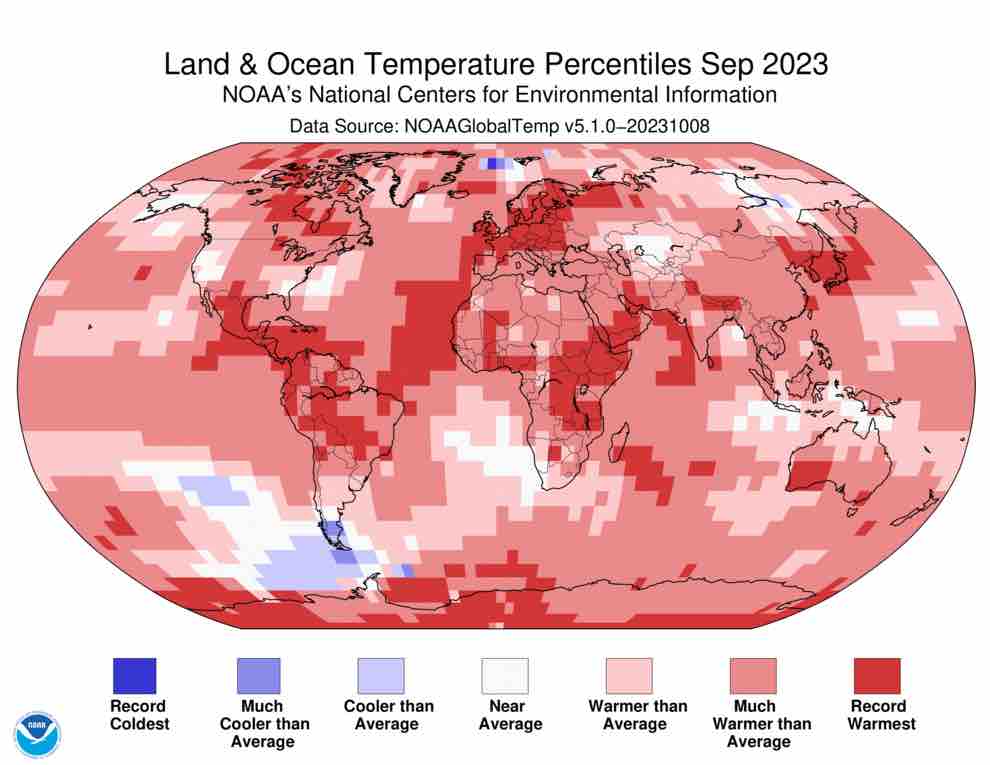Records show that North America, South America, Europe, Asia and Africa all experienced their most blistering Septembers; thanks to El Niño.
September 2023 will be remembered in climate records as the month when Earth’s thermostat seemed to forget its seasonal settings. According to the National Oceanic and Atmospheric Administration (NOAA), it was the hottest September observed in its 174-year record, painting a dire portrait of our planet’s shifting climate patterns.
RELEVANT SUSTAINABLE GOALS



Ellen Bartow-Gillies, a climatologist at NOAA and the spearhead behind the report, expressed a combination of surprise and concern at the findings. “Not only was it the hottest September we’ve recorded, but it shattered the previous September record from 2020 by 0.46°C (0.83°F). To truly grasp this, it’s like realizing that September 2023 was warmer than the average July from the first decade of this millennium,” Bartow-Gillies stated.
Driving this anomaly are two potent forces: the inexorable grip of human-induced climate change, predominantly a result of burning fossil fuels, and El Niño, a naturally occurring climate phenomenon known for supercharging global temperatures.

But what’s startling about this September’s heat isn’t just its intensity. It’s the breadth of its reach. From the Northern Hemisphere, still feeling summer’s ember, to the Southern Hemisphere, where winter’s chill should still linger, the warmth was unrelenting. Records show that North America, South America, Europe, and Africa all experienced their most blistering Septembers.
Highlighting this concerning global trend, the World Weather Attribution Group, in collaboration with esteemed institutions like Imperial College, London, and the Royal Netherlands Meteorological Institute, pinpointed a link between the unusual heat in South America and anthropogenic climate change. Bartow-Gillies notes, “This persistent heat, long after it should have subsided, is becoming a global hallmark.”

Further alarming findings from the NOAA report revealed that Antarctica, far removed from most human activities, wasn’t spared either. It experienced its warmest September, which has played a part in driving sea ice levels to record lows. Our oceans weren’t left untouched. Elevated sea surface temperatures were observed, and these tepid waters played a role in supercharging storms from New York City to Libya. The aftermath in Libya was particularly tragic, with dam failures leading to the loss of thousands of lives.
Climate scientists around the world, many of whom have been sounding the alarm for years, find themselves in a state of deepened concern. Bernadette Woods Placky, chief meteorologist at Climate Central, said, “It’s one thing to know the threat of climate change and another to see it manifest in such stark figures. Reports like these underscore the urgency of ramping up our climate interventions.”
She further emphasized the importance of pivoting away from fossil fuels towards cleaner, renewable energy sources and making necessary changes in community land management.
However, amidst the bleak outlook, Woods Placky also highlighted a beacon of hope: “Solutions are at hand, and a dedicated global community is working tirelessly towards them. The task ahead is monumental, but with accelerated action and scaling up these solutions, we can navigate towards a cooler, more sustainable future.”
You may also be interested in :
Scientists Review : Six Out Of Nine Planetary Boundaries Breached


